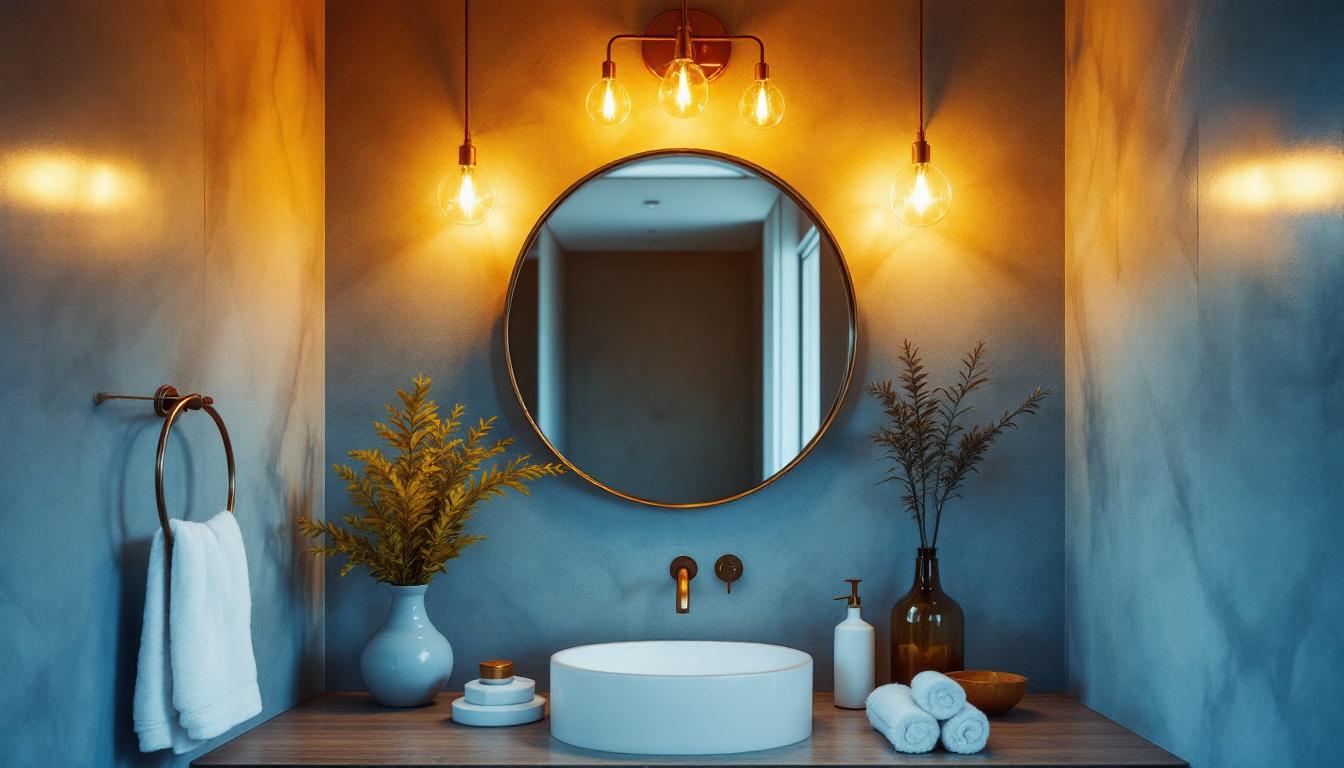
Lighting design has evolved significantly, with floating ceiling lighting emerging as a popular choice for both residential and commercial spaces. This innovative lighting solution not only enhances the aesthetic appeal of a room but also provides functional illumination. For lighting contractors, understanding the tools and techniques necessary for installing floating ceiling lighting is crucial. This article delves into the essential tools that every lighting contractor should have in their arsenal when working with floating ceiling installations.
Floating ceiling lighting refers to a design where light fixtures appear to be suspended from the ceiling, creating a visually striking effect. This technique can be achieved through various methods, including recessed lighting, pendant fixtures, and LED strips. The key to successful floating ceiling lighting lies in the careful planning and execution of the installation process.
Contractors must consider factors such as the type of ceiling, the layout of the space, and the desired ambiance when selecting fixtures. Moreover, understanding the electrical requirements and ensuring compliance with local codes is essential to guarantee a safe and effective installation.
There are several types of floating ceiling lighting options available, each offering unique benefits. Recessed lighting is a popular choice, as it provides a clean and modern look while minimizing glare. Pendant fixtures, on the other hand, can serve as statement pieces, adding character to a room. LED strip lighting is also gaining traction, as it allows for flexible placement and can be used to highlight architectural features.
Each of these options requires specific tools and techniques for installation, making it essential for contractors to be well-equipped and knowledgeable about the various methods. For instance, recessed lighting typically involves cutting precise holes into the ceiling and ensuring that the fixtures are securely mounted, while pendant lighting may require additional support structures to maintain stability. LED strip lighting, while often simpler to install, necessitates careful planning to ensure that the strips are placed in a way that maximizes their illuminating potential without creating unsightly shadows.
Furthermore, the choice of lighting technology can significantly impact the overall energy efficiency of a space. LED options, in particular, are favored for their longevity and lower energy consumption compared to traditional incandescent bulbs. This not only reduces the operational costs over time but also contributes to a more sustainable living environment. As homeowners and designers increasingly prioritize eco-friendly solutions, integrating energy-efficient floating ceiling lighting has become a popular trend that aligns with modern design philosophies.
Equipping oneself with the right tools is paramount for any lighting contractor. Proper tools not only streamline the installation process but also enhance the quality of the work. Below are some essential tools that should be part of every contractor’s toolkit when working with floating ceiling lighting.
Electrical tools are fundamental for any lighting installation. A reliable multimeter is essential for measuring voltage, current, and resistance, ensuring that all electrical connections are secure and functioning correctly. Additionally, wire strippers and crimping tools are necessary for preparing and connecting wires efficiently.
Having a quality drill and drill bits is also crucial, particularly when installing fixtures into ceilings. A cordless drill offers flexibility and ease of use, especially in tight spaces. Furthermore, a stud finder can help locate ceiling joists, ensuring that fixtures are securely mounted. Beyond these basics, a good set of pliers, including needle-nose and lineman’s pliers, can be invaluable for gripping, twisting, and cutting wires, allowing for precise adjustments during installation. Moreover, a cable puller can make the task of running wires through walls and ceilings much easier, saving time and effort on larger projects.
In today’s digital age, lighting design software has become an invaluable tool for contractors. Programs such as AutoCAD and Revit allow contractors to create detailed lighting plans, visualize the layout, and calculate the necessary lighting levels for a space. This software can also assist in client presentations, providing a clear representation of the proposed design.
By utilizing lighting design software, contractors can streamline the planning process, reducing the likelihood of errors and ensuring that the final installation meets the client’s expectations. Additionally, some software options offer simulation features that allow contractors to see how different lighting setups will look in real-time, helping to fine-tune designs before any physical work begins. This capability not only enhances creativity but also fosters collaboration with clients, as they can visualize the end result more effectively and provide feedback during the design phase.
Safety should always be a top priority when working with electrical installations. Contractors should invest in personal protective equipment (PPE), including safety glasses, gloves, and hard hats. Additionally, using a sturdy ladder is essential for reaching high ceilings safely.
Having a first aid kit on hand is also advisable, as accidents can happen even with the best precautions. Ensuring that all safety equipment is in good condition and readily accessible can help prevent injuries and promote a safe working environment. Furthermore, it is beneficial for contractors to undergo regular safety training sessions to stay updated on best practices and new safety regulations. This not only enhances personal safety but also fosters a culture of safety within the team, ensuring that everyone is aware of potential hazards and the correct procedures to follow in case of an emergency. Regularly reviewing safety protocols can also reinforce the importance of vigilance on the job site, ultimately leading to a more efficient and secure working environment for all involved.
Beyond having the right tools, understanding the techniques for installing floating ceiling lighting is equally important. Proper installation techniques can make a significant difference in the overall appearance and functionality of the lighting. Below are some key techniques that lighting contractors should master.
Before beginning any installation, careful planning of the lighting layout is essential. This involves determining the optimal placement of fixtures to achieve the desired lighting effect. Consideration should be given to the size and shape of the room, as well as the activities that will take place in the space.
Using design software can aid in visualizing the layout and making adjustments as necessary. Additionally, contractors should take into account the height of the ceiling and the type of fixtures being used, as these factors can influence the overall lighting quality.
Proper electrical connections are crucial for the safety and functionality of floating ceiling lighting. Contractors should familiarize themselves with local electrical codes and regulations to ensure compliance. This includes understanding wire gauge requirements, circuit load capacities, and grounding practices.
When making connections, it is important to strip wires correctly and use appropriate connectors. Additionally, ensuring that all connections are tight and secure can prevent future issues such as flickering lights or electrical shorts.
Once the installation is complete, thorough testing is essential. Contractors should check each fixture to ensure it is functioning correctly and providing the desired level of illumination. This includes testing dimmable fixtures, if applicable, to ensure smooth operation across the entire range of brightness.
Conducting a final walkthrough with the client can also help identify any areas that may require adjustments. This collaborative approach not only enhances client satisfaction but also reinforces the contractor’s professionalism and attention to detail.
While installing floating ceiling lighting can be a rewarding endeavor, contractors may encounter various challenges along the way. Understanding these potential issues and having strategies in place to address them can help ensure a smooth installation process.
One common challenge contractors face is dealing with variations in ceiling height. Uneven ceilings can lead to difficulties in achieving a uniform lighting effect. To address this issue, contractors should take precise measurements before installation, ensuring that all fixtures are mounted at the correct height.
Using adjustable mounting brackets can also help accommodate variations in ceiling height, allowing for a more consistent appearance across the installation. Additionally, incorporating fixtures with adjustable features can provide flexibility in achieving the desired lighting effect.
Another challenge is managing the electrical load, particularly in spaces with multiple fixtures. Overloading a circuit can lead to tripped breakers or even electrical fires. Contractors should calculate the total wattage of all fixtures and ensure that they do not exceed the circuit’s capacity.
If necessary, contractors may need to install additional circuits or use lower-wattage fixtures to distribute the load evenly. Consulting with an electrician can also provide valuable insights into managing electrical loads effectively.
Aesthetic concerns can arise during the installation process, particularly when it comes to achieving a cohesive design. Contractors should work closely with clients to understand their vision and preferences, ensuring that the selected fixtures align with the overall design theme.
Incorporating a variety of fixture styles and finishes can help create visual interest while maintaining a unified look. Additionally, using dimmable fixtures can provide flexibility in adjusting the ambiance of the space, further enhancing the overall aesthetic appeal.
Floating ceiling lighting presents a unique opportunity for lighting contractors to enhance the beauty and functionality of a space. By equipping themselves with the essential tools, mastering installation techniques, and addressing common challenges, contractors can deliver high-quality installations that meet their clients’ needs.
As the demand for innovative lighting solutions continues to grow, staying informed about the latest trends and technologies will be crucial for contractors looking to remain competitive in the industry. Embracing floating ceiling lighting as part of their service offerings can not only elevate a contractor’s portfolio but also provide clients with stunning and effective lighting solutions.
Ready to take your lighting projects to the next level with floating ceiling lighting? At LumenWholesale, we offer an exceptional range of high-quality, spec-grade lighting products designed to meet the needs of the most discerning contractors. Enjoy unbeatable wholesale prices and the convenience of cutting out the middleman, ensuring you get the most value for your investment. Our commitment to quality, affordability, and customer satisfaction makes us the go-to source for contractors seeking reliable and high-performance lighting solutions. Plus, with free shipping on bulk orders, you can stock up on all the essential tools and fixtures without worrying about hidden fees. Elevate your service offerings and delight your clients with stunning lighting solutions from LumenWholesale. Wholesale Lighting at the Best Value is just a click away.

Discover the crucial aspects that lighting contractors frequently miss when installing flood light LED outdoor systems.

Discover how lighting contractors can enhance their projects and boost efficiency by transitioning to LED replacements for fluorescent lights.

Discover how lighting contractors can enhance their business by incorporating commercial outdoor fans into their projects.

Discover the world of unusual vanity lights with insights tailored for lighting contractors.